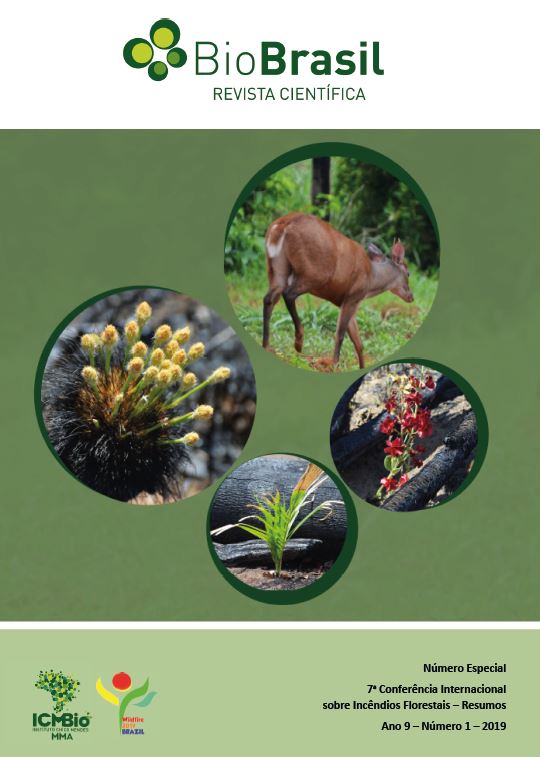Application of operational seasonal prediction systems for seasonal prediction of fire danger in tropical ecosystems
DOI:
https://doi.org/10.37002/biodiversidadebrasileira.v9i1.1088Keywords:
Seasonal prediction, wildfire danger, FWIAbstract
The extreme wildfire events in California, Portugal, Spain, Australia, Sweden and Greece in 2017 and 2018 caused considerable economic, environmental and human life losses and gathered much media attention. These events highlighted the need for both short and medium-term forecasts of wildfire danger, the latter useful for raising awareness and preparing for wildfire prevention and suppression strategies. In tropical areas such as the Amazon basin and Indonesia, wildfires are greatly affected by inter-annual fluctuations in tropical Sea Surface Temperatures (SSTs). The 1997-1998 and 2015-2016 El Niño events were associated with above-average wildfires in Indonesia and Amazonia. While countries such as the United States, Canada and Australia have developed extensive and reliable short-term and seasonal wildfire forecasting systems, similar systems are less well established for predicting wildfire in tropical regions. Our approach to seasonal prediction of fire risk is to use real-time climate forecasts, such as those from ECMWF's System 5 forecast system, to issue predictions of the Canadian Fire Weather Index (FWI) and McArthur Forest Fire Danger Index (FFDI), using the methodology of ECMWF's short-term Global ECMWF Fire Forecast (GEFF). These indices are computed from daily values of temperature, precipitation, relative humidity and wind speed, accounting for factors that are important for fire severity and spread. As operational forecasts produce ensemble predictions of these variables, we are able to formulate probabilistic predictions from ensemble daily predictions of fire danger indices at a global scale. Global observations of burned area from the MCD64 global burned area product and the Global Fire Emissions Database version 4 (GFED4) are used to evaluate the skill of the predictions. We will show the skill of the predictions for the Amazon basin and cerrado region, with a focus on the extreme wildfire seasons associated with El Niño events.
Â
Downloads
Downloads
Published
Issue
Section
License
Copyright (c) 2021 Biodiversidade Brasileira - BioBrasil

This work is licensed under a Creative Commons Attribution-NonCommercial-NoDerivatives 4.0 International License.
Os artigos estão licenciados sob uma licença Creative Commons Atribuição-NãoComercial-SemDerivações 4.0 Internacional (CC BY-NC-ND 4.0). O acesso é livre e gratuito para download e leitura, ou seja, é permitido copiar e redistribuir o material em qualquer mídia ou formato.











